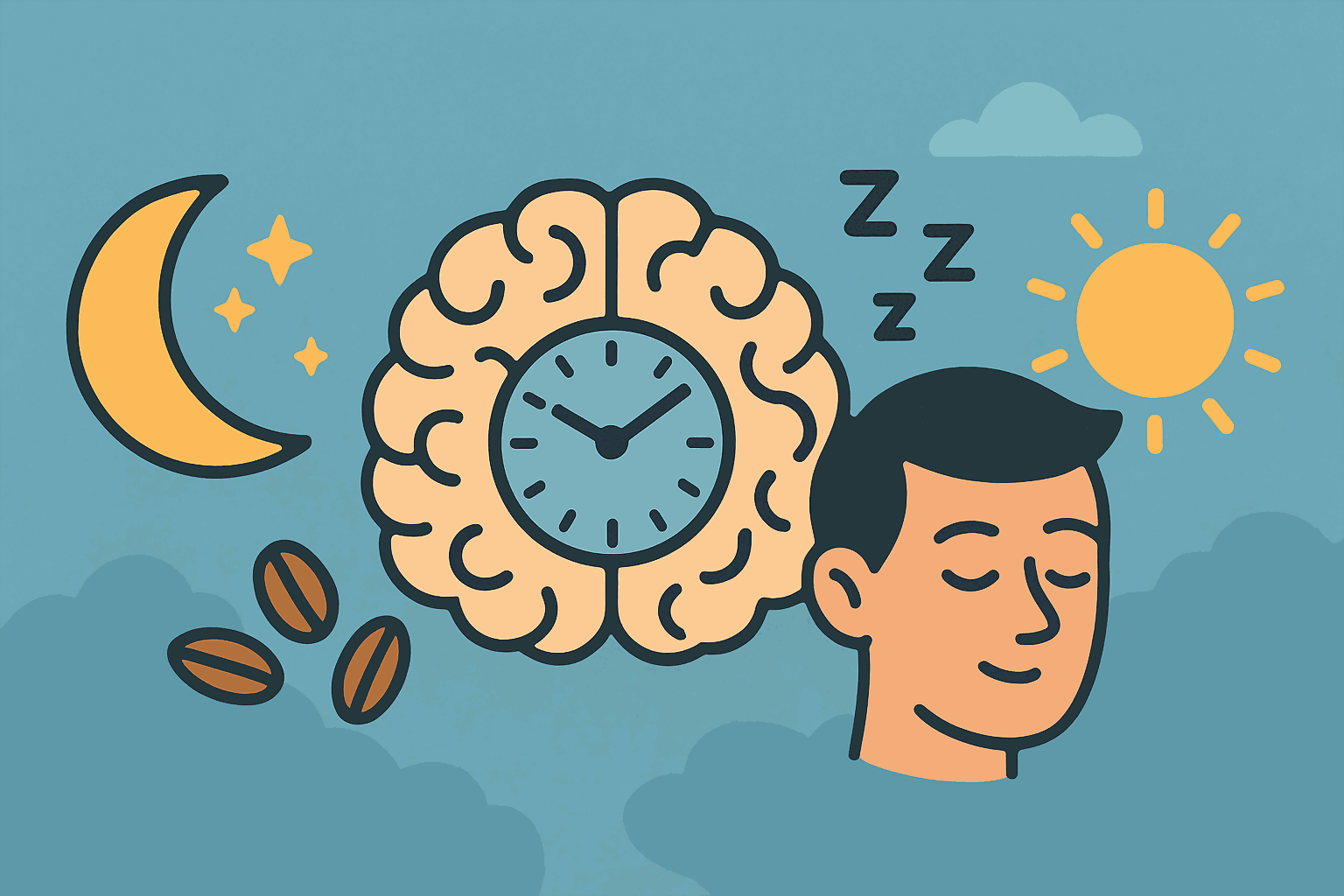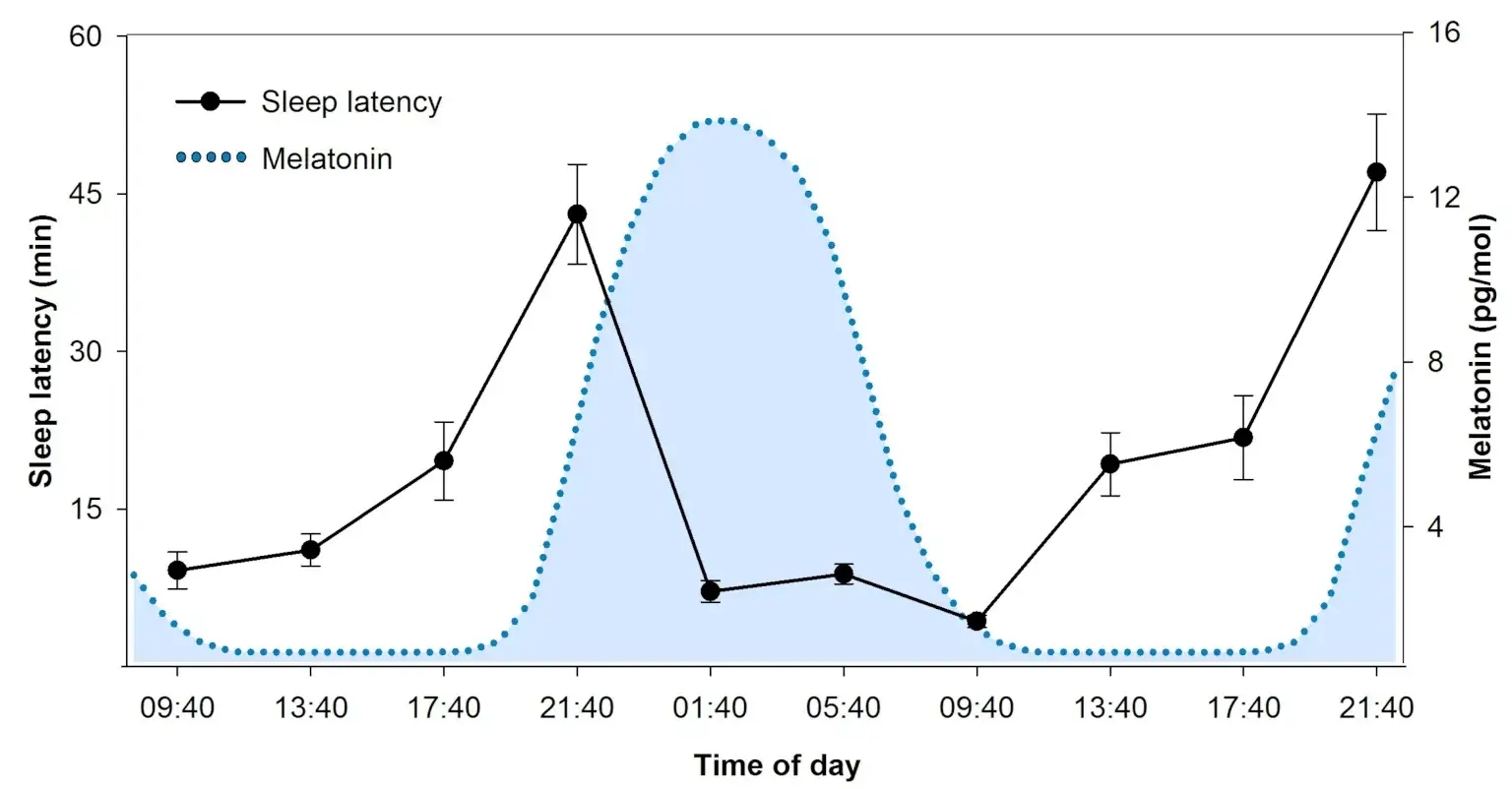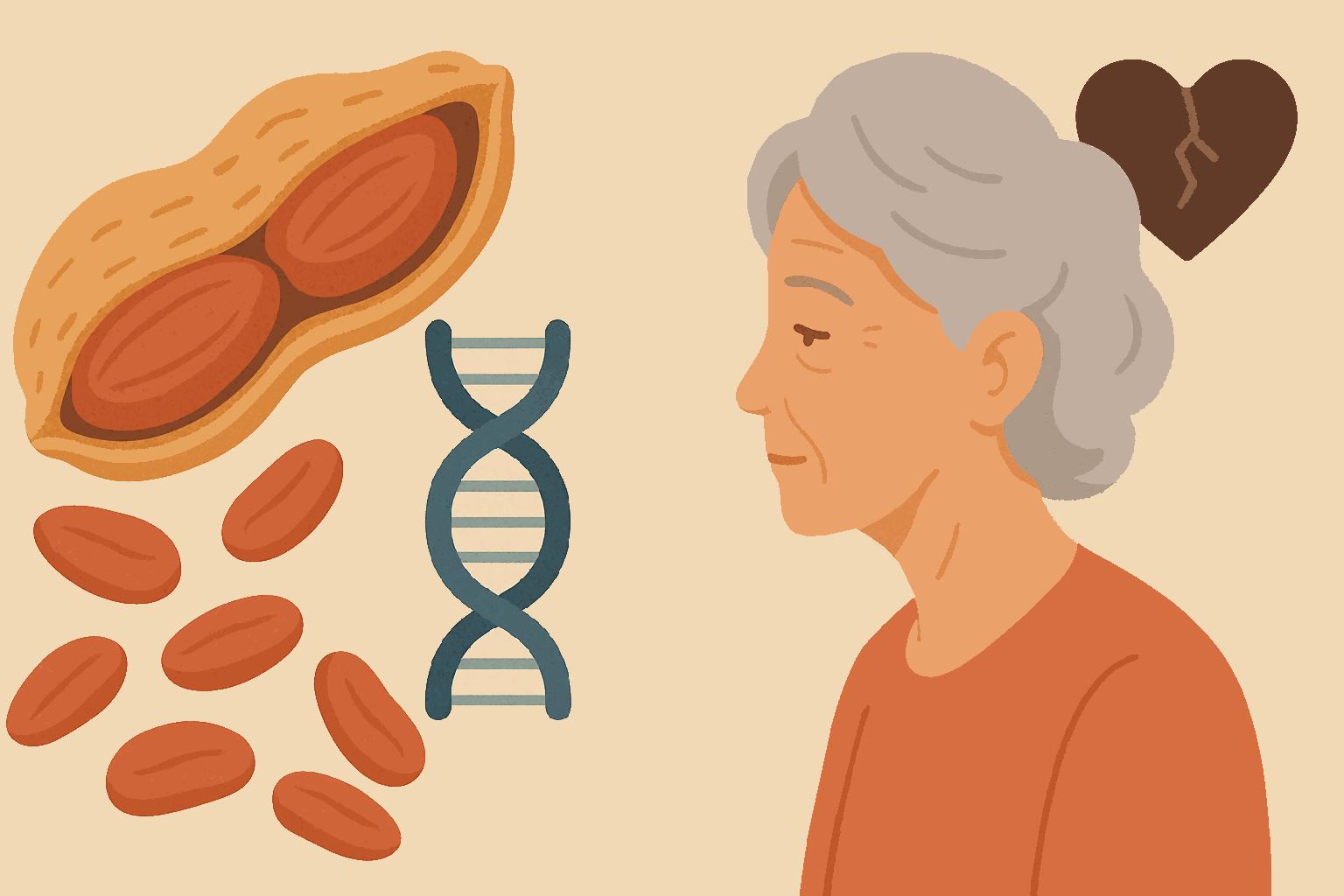
Unlock Your Health: The Indispensable Science of Sleep and Circadian Rhythms
- Ethan Brooks
- Health , Sleep science , Preventive medicine
- May 5, 2025
Table of Contents
Fast Facts: Mastering Sleep & Circadian Rhythms (TL;DR)
- Sleep is Essential: Quality sleep and synchronized circadian rhythms are as vital as air, food, and water for overall health.
- Two Key Drivers: Sleep is regulated by adenosine buildup (sleep pressure) and your internal circadian clock (Process C).
- Light is Powerful: Morning light anchors your circadian rhythm; evening blue light disrupts it by suppressing melatonin.
- Consistency Matters: Regular sleep-wake cycles are crucial for hormonal balance, immune function, and cellular repair.
- Disruption is Risky: Chronic circadian misalignment is linked to increased risks of various health issues, including metabolic disorders, mood disturbances, and certain cancers.
- Actionable Steps: Prioritize morning light, dim evening lights, minimize screen time before bed, and maintain a consistent sleep schedule to optimize your internal clock.
The Unseen Engine: Why Sleep and Circadian Rhythms Dictate Your Health
Sleep isn’t merely a passive state of rest; it’s a fundamental biological imperative, as critical to our survival and well-being as air, food, and water [11]. Working in concert with sleep are our internal circadian rhythms – the sophisticated biological clocks meticulously ticking within virtually every cell of our bodies. These rhythms orchestrate a vast symphony of physiological functions. Understanding and nurturing these interconnected systems isn’t just about feeling more rested; it’s a cornerstone of robust long-term health, sharp cognitive function, stable mood, and even proactive disease prevention.
Many of us underestimate how profoundly the quality and timing of our sleep impact our daytime alertness, emotional regulation, and overall productivity. This intricate balance is primarily governed by two key biological processes, as illuminated by foundational sleep science research, such as Borbély’s two-process model of sleep regulation [1].
The Two Primary Forces Governing Your Sleep-Wake Cycle
Understanding these two processes empowers you to actively manage your sleep for better health.
1. Process S: The Sleep Pressure Cooker (Homeostatic Sleep Drive via Adenosine)

Throughout your waking hours, as your brain cells diligently work, they produce a natural byproduct: a nucleoside called adenosine. As adenosine gradually accumulates in your brain, it progressively increases what scientists term “sleep pressure” or “sleep drive”—that unmistakable, mounting sense of drowsiness urging you towards rest. Imagine an hourglass slowly filling with sand as your day unfolds.
- How it Works: Adenosine binds to specific receptors in the brain. This action inhibits wakefulness-promoting neurons, thereby increasing your perception of tiredness.
- Resetting the Clock: A sufficient period of quality, restorative sleep allows the brain to effectively clear out this accumulated adenosine. This metabolic housekeeping resets your sleep pressure, preparing you for optimal alertness the next day. This homeostatic process is vital for truly restorative sleep [2].
- The Caffeine Connection: Caffeine is a widely consumed stimulant that acts as an adenosine receptor antagonist. In simpler terms, it blocks adenosine from binding to its designated receptors. This temporarily masks feelings of fatigue and makes you feel more alert, but it doesn’t actually reduce the underlying adenosine buildup. This explains the common “energy crash” experienced as caffeine’s effects wear off and the full weight of accumulated sleep pressure makes itself known. It’s important to note that individual responses to caffeine, including how quickly it’s metabolized, can vary significantly due to genetic differences [3]. While genetic testing can offer insights, careful self-observation of your own caffeine sensitivity remains key.
2. Process C: The Master Timekeeper (Circadian Rhythms)
Operating independently of how long you’ve been awake (Process S), your body adheres to an internal, approximately 24-hour cycle known as the circadian rhythm (from Latin “circa diem,” meaning “around a day”). This internal biological clock, primarily orchestrated by a tiny but powerful region in the hypothalamus called the Suprachiasmatic Nucleus (SCN), regulates far more than just when you feel sleepy or alert. It intricately influences hormone release (like cortisol and melatonin), body temperature fluctuations, metabolic processes, cognitive alertness, and even cellular repair mechanisms throughout the day and night.
- The Suprachiasmatic Nucleus (SCN): Often referred to as the “master clock,” the SCN, comprised of about 20,000 neurons, receives direct information about environmental light levels from specialized photoreceptors in your eyes.
- Daily Synchronization (Entrainment): This master clock requires daily synchronization, or entrainment, with the external environment. Light is the most powerful cue for this process. Disruptions to this vital synchrony, known as circadian misalignment, can trigger widespread negative health consequences [4].
Light: The Most Potent Environmental Cue (Zeitgeber) for Your Internal Clock
Welcome back as we delve deeper into the regulation of sleep, a foundational pillar of your health.
While factors like consistent meal timing and regular physical activity also contribute as synchronizing cues (or zeitgebers), light exposure stands as the most potent environmental factor for aligning our internal circadian clock with the external 24-hour solar day.
How Light Intelligently Signals Your Brain:
- Detection in the Eye: Specialized cells in your retina, known as intrinsically photosensitive retinal ganglion cells (ipRGCs), contain a photopigment called melanopsin. These cells are particularly sensitive to blue-spectrum light and are distinct from the rods and cones responsible for conscious vision. They primarily detect ambient light intensity.
- Transmission to the Master Clock: Information about the detected light travels directly from these ipRGCs via the retinohypothalamic tract to the SCN – your brain’s master clock.
- Orchestrated Hormonal Cascade: The SCN then initiates a cascade of downstream signals to regulate various bodily functions:
- Morning Light: Exposure to bright light in the morning (especially sunlight) robustly stimulates the SCN. This signals the adrenal glands to release cortisol, a hormone that promotes alertness and wakefulness, and simultaneously cues the pineal gland to suppress the production of melatonin (often called the “sleep hormone” or “hormone of darkness”). This morning light exposure is critical for anchoring your wake-up time and setting a strong circadian rhythm for the day.
- Evening Darkness: Conversely, as natural light levels diminish in the evening, the SCN signals the pineal gland to begin producing and releasing melatonin. Rising melatonin levels help prepare your body for sleep by reducing alertness and lowering core body temperature.
The Double-Edged Sword of Modern Lighting:
Our modern, artificially lit environment can significantly interfere with these natural light-dark signals:
- Evening Blue Light Exposure: Exposure to bright light, particularly blue-rich light emitted from screens (smartphones, tablets, computers, televisions) and some energy-efficient LED bulbs in the hours leading up to bedtime, can trick your SCN into perceiving it as daytime. This, in turn, significantly suppresses natural melatonin production, potentially delaying sleep onset, reducing sleep quality, and shifting your circadian rhythm later [5].
- Impact of Nighttime Brightness: Research indicates that even brief exposure to bright white light during typical sleeping hours can acutely suppress melatonin levels [6]. Such disruptions may also impact other neurotransmitters like dopamine, potentially affecting mood, learning capacity, and alertness on the subsequent day.
Evidence-Based Recommendations for Optimal Light Management:
- ☀️ Prioritize Morning Sunlight: Make it a non-negotiable habit to get 10-30 minutes of direct sunlight exposure (without sunglasses, but never stare directly at the sun) within the first hour or two of waking. This is arguably the single most effective behavioral strategy to anchor your circadian rhythm robustly. If natural sunlight isn’t readily available (due to high latitudes, inclement weather, or mobility issues), consider using a bright (ideally 10,000 lux) daylight simulator lamp, positioned above eye level to mimic natural sunlight.
- 🕯️ Dim and Warm Evening Lighting: As sunset approaches and progresses through the evening, transition to dimmer, warmer-toned lighting in your home environment (e.g., using amber or red-hued bulbs, or dimmable fixtures). Consciously avoid bright, blue-toned overhead lights.
- 📱 Implement a Digital Sunset (Minimize Evening Screen Time): Significantly reduce your exposure to blue light from electronic screens for at least 1-2 hours before your intended bedtime. If screen use is unavoidable, utilize blue light filtering software/apps on your devices or wear blue-blocking glasses designed to filter out the disruptive wavelengths.
- 💡 Strategically Position Evening Lights: If using artificial lights in the evening, try to position them below eye level. This minimizes the direct stimulation of the melanopsin-containing ipRGCs in your retinas, which are more concentrated in the lower part of the retina and thus more sensitive to light from above.
- ⚫ Cultivate True Bedroom Darkness: Ensure your sleep environment is as dark as possible. Use blackout curtains or blinds to block external light, cover or remove any electronic devices that emit LED light, or wear a comfortable, high-quality eye mask.
The High Stakes of Disruption: Circadian Misalignment and Its Health Risks
When our lifestyle choices consistently clash with our internal biological clock – through chronic sleep deprivation, engagement in shift work, frequent travel across multiple time zones (leading to jet lag), or maintaining highly irregular sleep-wake schedules – the consequences invariably extend far beyond merely feeling tired. This state of circadian misalignment can, over time, wreak considerable havoc on our complex physiology.
The Concerning Link to Cancer: A Growing Body of Scientific Evidence
Disturbingly, a substantial and growing body of research confirms that chronic disruption of our circadian rhythms is implicated as a contributing factor in the development and progression of various types of cancer. While circadian disruption is not considered a direct cause of cancer in isolation, it appears to foster a cellular and systemic environment that is more conducive to malignant transformation and growth.
- Compromised Cell Cycle Control: Our internal circadian clock normally plays a critical role in regulating the genes involved in crucial processes like cell division, DNA repair, and programmed cell death (apoptosis). When this intricate regulation is disrupted, cells can lose their tight control over proliferation, potentially leading to the uncontrolled cell growth that is a hallmark of cancer [7]. Animal studies have demonstrated significantly increased tumor risk (e.g., in liver cancer models) when circadian rhythms are deliberately and chronically disrupted.
- Weakening of Tumor Suppressor Genes: Key tumor suppressor genes, such as p53 (often dubbed the “guardian of the genome” for its vital role in preventing cancer by halting the division of damaged cells and initiating DNA repair or apoptosis), exhibit circadian patterns in their activity. Chronic sleep loss and persistent circadian disruption have been shown to dampen p53 activity and its rhythmic expression, rendering cells more vulnerable to accumulating cancer-causing mutations and genomic instability [8].
- Fueling Chronic Inflammation: Persistent circadian disruption is strongly linked to an increase in systemic, low-grade chronic inflammation. Individuals engaged in long-term shift work, for example, often exhibit higher circulating levels of pro-inflammatory markers like IL-6 and C-reactive protein. Chronic inflammation is a well-established driver of cancer development, capable of promoting DNA damage, supporting tumor cell proliferation, and fostering a pro-tumorigenic microenvironment [9].
- Hormonal Imbalance and Disruption: The circadian system is a master regulator of numerous hormones, including melatonin (which possesses oncostatic, or anti-cancer, properties, in addition to its role in sleep) and cortisol (a primary stress hormone). Disruptions to circadian timing alter the natural rhythms of these hormones, potentially impacting cancer risk, particularly for hormone-sensitive cancers such as breast and prostate cancer.
- Impaired Immune Surveillance: The body’s immune system, including its capacity for immune surveillance (detecting and eliminating nascent cancerous or pre-cancerous cells), also operates on a distinct circadian rhythm. Circadian disruption can impair various facets of immune function, potentially allowing abnormal cells to evade detection and destruction by the immune system more easily.
- Documented Specific Cancer Risks: A combination of epidemiological studies in human populations and mechanistic research in laboratory settings has linked chronic circadian disruption to increased risks of developing breast, prostate, colorectal, liver, pancreatic, and other types of cancers. For instance, a 2024 study highlighted a significant association between chronic sleep disturbances and the risk of developing gastrointestinal cancers [10], further underscoring the importance of the gut-brain-circadian axis.
Beyond Light: Other Zeitgebers and Strategies for Circadian Optimization
While light indisputably reigns as the dominant zeitgeber, other environmental and behavioral cues also play significant roles in helping to entrain and stabilize your circadian rhythm:
- Meal Timing and Diet Composition: Establishing regular meal times can help synchronize the “peripheral clocks” located in organs such as your liver, pancreas, and gut. Consistently eating late at night, especially large or processed meals, can disrupt these peripheral clocks and may lead to metabolic dysregulation. A balanced diet also supports overall health, which underpins healthy sleep.
- Exercise Timing and Type: Regular physical activity offers profound benefits for sleep quality and circadian rhythm stability. Morning or afternoon exercise often supports better sleep architecture and easier sleep onset. However, very intense or prolonged exercise performed too close to bedtime might delay sleep onset for some individuals due to its stimulating effects.
- Social Cues & Consistent Daily Routines: Maintaining consistent daily schedules – including regular times for work, social interactions, and winding down before bed – provides important temporal cues that reinforce and strengthen your circadian rhythm. Our bodies thrive on predictability.
- Temperature: Your core body temperature naturally fluctuates throughout the day, typically dropping in the evening to facilitate sleep. You can support this by ensuring your bedroom is cool and by taking a warm bath before bed (the subsequent cooling down can promote sleepiness).
Actionable Strategies for Healthy Sleep and Robust Circadian Alignment:
- Uphold Unwavering Consistency: Strive to go to bed and wake up at approximately the same time every day, including on weekends and holidays, as much as your lifestyle realistically permits. This is fundamental for stabilizing your circadian rhythm.
- Become a Master of Your Light Exposure: Diligently prioritize bright morning light exposure (as detailed previously) and consciously minimize exposure to bright and, particularly, blue-spectrum light in the evening.
- Craft a Relaxing Bedtime Ritual: Dedicate 30-60 minutes before your intended sleep time to wind-down activities that promote calmness and signal to your body that it’s time to prepare for rest. Examples include reading a physical book (not on a backlit screen), gentle stretching or yoga, meditation, listening to calming music, or taking a warm (not hot) bath or shower.
- Optimize Your Sleep Sanctuary (Bedroom Environment): Transform your bedroom into an ideal environment for sleep: dark, quiet, and cool. A temperature around 18°C (65°F) is often recommended as optimal for most adults. Consider earplugs if noise is an issue.
- Be Mindful of Caffeine and Alcohol Intake: Avoid consuming caffeine, especially in significant amounts, in the afternoon and evening (be aware of your personal sensitivity cutoff). Limit alcohol consumption, particularly in the hours before bedtime, as while it may initially induce drowsiness, it disrupts sleep architecture and quality later in the night.
- Hydrate Wisely: Drink an adequate amount of water throughout the day to stay well-hydrated, but try to reduce your fluid intake in the hour or two immediately before bed to minimize the likelihood of sleep-disrupting nighttime awakenings for urination.
- Consider Your Natural Chronotype: Are you genetically predisposed to be an “early bird” (morning lark) or a “night owl” (evening type)? While consistency remains paramount, try to align your daily schedule with your natural sleep-wake tendencies (your chronotype [12]) as much as your life’s demands allow. Working against your chronotype can make healthy sleep more challenging. For more on melatonin’s role and potential supplementation, consult reliable sources [13], but prioritize behavioral strategies first.
Conclusion: Prioritize Sleep and Circadian Health as Foundational Self-Care
The scientific evidence is overwhelmingly clear: obtaining consistent, high-quality sleep and maintaining well-aligned circadian rhythms are not mere luxuries or indulgences. They are non-negotiable pillars of both physical and mental health [14]. These fundamental biological processes influence virtually every aspect of your being, from your daily mood, energy levels, and cognitive performance to your long-term metabolic health, immune system strength, and susceptibility to chronic diseases, including cancer.
Normalizing your sleep and aligning your lifestyle with your natural circadian rhythms is not just about feeling less tired; it’s a vital daily protocol for fostering hormonal balance, strengthening your immune defenses, protecting cellular integrity, managing stress, and promoting profound overall well-being. By consistently implementing these evidence-based strategies – such as managing your light exposure intelligently, adhering to regular sleep-wake schedules, and creating a supportive sleep environment – you are taking powerful, proactive steps towards safeguarding your health today and for all your years to come. Make the conscious decision to prioritize your sleep and circadian health. Your body and mind will thank you profoundly. If you experience persistent sleep problems, consult a healthcare professional to rule out or address potential sleep disorders [15].
Frequently Asked Questions (Q&A)
Q1: What is the difference between sleep and circadian rhythms?
Q2: How does caffeine really affect my sleepiness?
Q3: Can I 'catch up' on sleep on weekends?
Q4: What are the most significant health risks of consistently poor sleep or disrupted circadian rhythms?
Q5: When should I see a doctor about my sleep?
Disclaimer
The information provided on BioBrain is intended for educational purposes only and is grounded in science, common sense, and evidence-based medicine. It is not a substitute for professional medical advice, diagnosis, or treatment. Always consult a qualified healthcare provider before making significant changes to your diet, exercise routine, or overall health plan.
References
- Borbély AA. (1982) "A two process model of sleep regulation."
- Patel AK, Reddy V, Araujo JF. (2023) "Physiology, Sleep Stages. In: StatPearls [Internet]."
- Hayes JE, Wallace MR, Knopik VS, et al. (2011) "Genetic variants in TAS2R38 and the PROP bitter taste receptor are associated with coffee and alcohol consumption."
- Chellappa SL, Vujovic N, Williams JS, Scheer FAJL. (2022) "Impact of circadian misalignment on cardiovascular function in humans."
- Gooley JJ, Chamberlain K, Smith KA, et al. (2011) "Exposure to room light before bedtime suppresses melatonin onset and shortens melatonin duration in humans."
- Zeitzer JM, Dijk DJ, Kronauer RE, Brown EN, Czeisler CA. (2000) "Sensitivity of the human circadian pacemaker to nocturnal light: melatonin phase resetting and suppression."
- Lee Y, Lee J, Kim K, et al. (2021) "Circadian rhythm and the cell cycle: a complex interplay in health and disease."
- Mteyrek A, Savvidis C, Ghayad SE, GkL H. (2020) "Circadian Clock and p53: A Complex Interplay with Implications in Cancer."
- Coussens LM, Werb Z. (2002) "Inflammation and cancer."
- Chen Y, Li Z, Wang Y, et al. (2024) "Circadian disruption and gastrointestinal cancer: Unraveling the intricate links."
- National Heart, Lung, and Blood Institute. (2022) "Sleep Deprivation and Deficiency."
- Sleep Foundation Staff. (2024) "Chronotypes: What They Are, And How They Affect Your Sleep."
- National Center for Complementary and Integrative Health. (2021) "Melatonin: What You Need To Know."
- Harvard Health Publishing. (2021) "Sleep and mental health."
- American Academy of Sleep Medicine. (2017) "Common Sleep Disorders."
Tags :
- Sleep
- Circadian rhythms
- Biological clock
- Health
- Adenosine
- Melatonin
- Cortisol
- Light exposure
- Sleep hygiene
- Cancer prevention
- Evidence based medicine
- Scn
- Improve sleep quality
- Optimize circadian rhythm
- Sleep and disease
- Boost energy naturally

